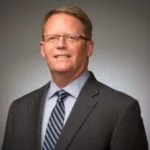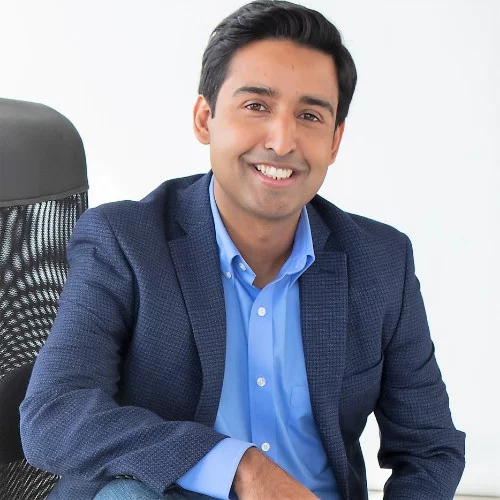For the second in our series of interviews with the data and analytics leaders who are speaking at this year’s IBM CDO Fall, we spoke to Joshua Tamayo-Sarver, VP, Informatics at CEP America.

Josh is responsible for overseeing the organizational data strategy, evaluating the effects of programs and practices, and leveraging data to provide the information needed for CEP to provide the highest quality and most efficient patient care. In addition to being the VP of Informatics, he works as a staff physician in the Emergency Department at Good Samaritan Hospital in San Jose, California.
Could you share with us an example of how you have used data to identify an opportunity for improvement within your organization?
Our foremost priority is ensuring that we provide high quality patient care and meet patient needs. While many industries want repeat customers, when patients need to return multiple times for the same problem, that indicates that we have failed to meet their needs on the first time. This shows that there is inadequate care and healthcare waste. We have a guiding principle that the role of data and technology is to handle the complexity so that a simple, more effective process can be implemented.
At that time, it was almost impossible for a treating doctor in the emergency department to know if a patient was likely to need to come back if they were discharged home. We wanted our doctors to know if a patient was likely to return before they even started caring for them, so that the doctor could better identify the patient’s real needs and address them. As impossible as it sounds, we leveraged our dataset of 35 million patient visits to create a model that could identify, in real-time, when a patient was likely to return to the emergency department.
We then created near real-time connections with the hospital, so that the moment the patient checked into the emergency department, that information hit our warehouse and we ran the model against our data, then returned the likelihood of the patient to return to the doctor, all with a latency of under a minute. The doctor could then go to the patient and say “I know that we have failed to meet your needs when you have been to the emergency department in the past, what happened and what can we do differently this time to make sure we give you the care you need?” Then, if the patient is discharged, their information is automatically passed to an a callback app so that the patient receives a callback from a physician the next day.
This program has resulted in a significant reduction in emergency department revisits, improved patient care, and a more satisfying experience for our doctors.
How have you been able to empower non-data colleagues through your data analytics program and what challenges did you encounter?
Healthcare is chocked full of technology that is forced onto the front-line health care workers that are delivering care because it seemed like good technology. As a doctor, the last thing I want to see is another report that quantifies a problem I already know is there or, even worse, another piece of technology I need to figure out how to use so that it can create data for a report somewhere, that quantifies a problem I already know is there. Everyone is left looking at reports, perhaps even sophisticated predictive analytics identifying a problem, and asking “Then what do we do?”.
As an emergency physician I can tell you that I give 110% every shift I work. When you show me a report of how I performed last year, last month, or even yesterday, all it tells me is how good I can be. Sure, there may be different areas on which I can focus, but it simply squeezing the balloon. I will focus on patient satisfaction by slowing down and taking more time to talk with my patients. But now my patients are waiting in the emergency department longer. Next month I will speed up so people do not need to wait so long for care, but they will be less satisfied.
I want to do better, to be better, but my best is my best and that is what I have already been giving. If I run my fastest mile in 7 minutes, I can train and train and train, and may be able to run it in 6:55, but I can’t make any huge improvements. If you give me a tool to use to be better, like a bicycle, well, then I will perform at a whole new level.
Similarly, if you give me a tool to use in the emergency department so that I can have a better process, so that I can perform better, and I will embrace it with open arms. Thus, I need to use data to identify the greatest opportunities, but I must bring a tool, an app, or something that allows a better process to take advantage of the opportunity. I have to be able to answer the “Then what?” question. I have to bring a real-time solution or else I am just creating noise and a negative culture.
How do you believe emerging technologies such as AI and Machine Learning, alongside wearables and IoT, will impact the healthcare industry?
I think that one of the fundamental problems in medical care is the problem with testing and the accuracy of diagnostic tests. The second big problem is the difficulty in determining who is going to benefit from a given treatment. I believe that the ultimate solution to the problem with diagnostic tests is that healthcare will move away from the testing paradigm and to a monitoring paradigm, which will rely on wearables, IoT, and non-invasive home testing. I think of testing as looking at a patient at one point in time and asking “What, if anything, is wrong with this patient?”.
Monitoring, on the other hand, is regular periodic evaluation asking “Has anything in this patient changed that may mean there is something about to go wrong?”. Most medical tests are very poor at determining a diagnosis. Medical training is extensive because it takes considerable knowledge and experience to balance competing uncertainties, weigh them in the patient’s psychosocial context, and then decide on a reasonable course of action realizing that the true diagnosis is typically uncertain. We perform tests, such as MRI, CT scan, laboratory evaluation, etc., but it is rare that such a test reaches even 90% accuracy.
As a data scientist we can recognize that the performance of the test is largely limited by taking an individual test result and comparing to a normal population to determine normal versus abnormal. There is so much normal physiological variation from person to person, that this makes it very difficult to design a test that can separate disease from healthy state. Add to that problem that many disease states create similar physiological dysfunction, and it is suddenly amazing that medical tests perform at all.
Once we can collect regular periodic measurements through wearables, IoT, and non-invasive home testing, we can use a large number of measurements combined together over time to detect subtle changes at the individual level. Once we get to that phase, I expect some AI and machine learning techniques will aid in both early identification of diagnosis and in determining appropriate treatment for the individual patient.
To hear more from Josh, and to put your own questions to him, be sure to join us at the Boston Park Plaza on October 24-25 for the IBM CDO Summit. At the exclusive event, Josh will be joined as a speaker by over 50 data and analytics leaders, as part of a gathering with over 150 C-Suite and VP level executives.
Josh will be leading a discussion entitled ‘Stimulating Industry Innovation – Using Data to Identify New Business Models’ where he, and the other data leaders in attendance, will discuss how to disrupt the market by making the most out of your data to create new business models.
The event is complimentary and you can apply for your place online. Be sure to act fast as with over 100 attendees already registered, secure your place today to avoid disappointment.
Don’t forget to check out our other interviews, as well as articles and more, in our dedicated content section.







